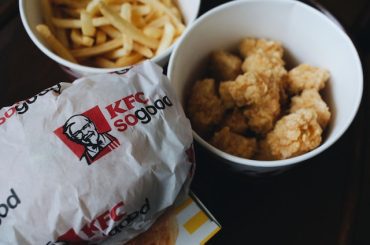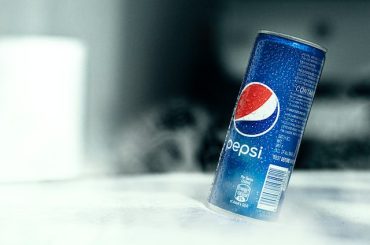Before we dive deep into the Marketing Mix, let’s get the business overview of YouTube. YouTube is the world’s largest video-sharing platform, allowing users to upload, share, and view videos.
It was created in February 2005 by three former PayPal employees: Chad Hurley, Steve Chen, and Jawed Karim. In November 2006, Google acquired YouTube for $1.65 billion in stock. Since then, YouTube has become a subsidiary of Google, which is a part of the holding company Alphabet Inc.
Business Model: YouTube primarily generates revenue through advertising. Advertisers pay to display their ads on the platform, and YouTube shares a portion of that revenue with content creators who have monetized their channels through the YouTube Partner Program (YPP). Ads can appear in various formats, such as display ads, overlay ads, skippable video ads, non-skippable video ads, and sponsored cards.
Other revenue streams include:
- YouTube Premium: A subscription-based service that offers an ad-free viewing experience, access to YouTube Originals, and the ability to download videos for offline viewing. Subscribers can also access YouTube Music, a music streaming service.
- Super Chat and Super Stickers: These features allow viewers to pay money to have their messages or stickers highlighted during a live stream. This revenue is shared between YouTube and the content creator.
- Channel Memberships: Creators can offer channel memberships that provide subscribers exclusive content, badges, and emojis for a monthly fee. A portion of this fee goes to YouTube, with the rest to the creator.
- Merchandise Shelf: Creators can showcase their merchandise directly on their channel pages, enabling fans to purchase items without leaving the YouTube platform. YouTube takes a commission on each sale.
Key Metrics: Some important metrics for YouTube’s business include:
- Monthly Active Users (MAUs): This measures the number of unique users who access the platform within a given month. YouTube has over 2 billion monthly active users.
- Watch Time: The total amount of time users spend watching videos on the platform. YouTube users consume over 1 billion hours of videos daily.
How does Google make money? What is Google’s Business Model?
Here is the Marketing Mix for YouTube
A marketing mix, also known as the 4Ps of marketing, is framework marketers use to develop and implement effective marketing strategies. The concept helps businesses identify and optimize the key components necessary to promote and sell their products or services. The 4Ps of the marketing mix are Product, Price, Place, and Promotion.
In addition to the traditional 4 Ps, marketers have expanded their strategies by incorporating additional elements (People, Process & Performance) to help them better understand and reach their target audiences. But we will focus on the 4Ps as they still are the foundation of any marketing strategy. In this article, we will understand the marketing mix of YouTube.
What is a Marketing Mix? What are the 4Ps of Marketing?
Product
- Video-Sharing Platform: YouTube’s core product is its video-sharing platform, which allows users to upload, share, and view videos across various categories, such as entertainment, education, music, gaming, and more. Users can also like, comment, and share videos with others. The platform offers both user-generated content and professionally produced content.
- YouTube Partner Program (YPP): YouTube provides a monetization program called the YouTube Partner Program, which allows content creators to earn revenue through ads displayed on their videos. This program encourages creators to produce high-quality content and helps retain them on the platform.
- YouTube Premium: This subscription-based service provides an ad-free experience, access to YouTube Originals (exclusive series and movies), and the ability to download videos for offline viewing. YouTube Premium also includes access to YouTube Music, a dedicated music streaming service.
- Live Streaming: YouTube offers live streaming capabilities, allowing creators to broadcast live content to their audience. This feature supports various types of content, such as gaming, events, Q&A sessions, and more.
- YouTube Kids: This is a dedicated version designed specifically for children, offering curated, age-appropriate content in a safe environment. Parental controls and content filters help ensure the content is suitable for kids.
- YouTube Studio: A set of tools and analytics for content creators to manage their channels, track performance, and interact with their audience. YouTube Studio helps creators optimize their content and grow their channels.
- Advertising Solutions: YouTube offers a range of advertising options for businesses, including display ads, video ads, and sponsored cards. These ad formats help companies to reach their target audience on the platform and drive engagement.
Price
- Free Platform Access: YouTube primarily provides a free video-sharing platform for users to upload, share, and watch videos. The platform generates revenue through advertisements displayed alongside or within the videos. This ad-supported model allows YouTube to offer its services for free to most users.
- YouTube Premium: YouTube offers a subscription-based service called YouTube Premium at a monthly fee, which provides an ad-free experience, offline viewing, and access to YouTube Originals and YouTube Music. This pricing model caters to users who prefer an enhanced experience without ads and are willing to pay for it.
- Advertising: For advertisers, YouTube offers a variety of ad formats and targeting options at different price points. Advertisers usually pay on a cost-per-impression (CPM) or cost-per-click (CPC) basis, depending on their campaign objectives. YouTube’s advertising pricing depends on factors like ad format, targeting options, competition, and the advertiser’s budget.
- Channel Memberships: Content creators can offer channel memberships to their subscribers at different price tiers, providing exclusive content and perks in return. YouTube takes a percentage of the membership fee; the remaining revenue goes to the creator.
- Super Chat and Super Stickers: During live streams, viewers can purchase Super Chats or Super Stickers to have their messages or stickers highlighted. The pricing for these features varies based on the message length or sticker type. YouTube shares the revenue generated through these features with the content creator.
- Merchandise Shelf: Through the Merchandise Shelf feature, creators can sell their merchandise directly on their channel pages. The pricing for the merchandise depends on the creator’s preferences, and YouTube takes a commission on each sale.
Place
- Global Availability: YouTube is a web-based platform accessible to users worldwide, with localized versions available in over 100 countries and support for over 80 languages. This global reach enables YouTube to attract users from diverse backgrounds and geographic locations.
- Multi-Device Accessibility: YouTube can be accessed through various devices, including desktops, laptops, smartphones, tablets, and smart TVs. The platform has dedicated apps for iOS, Android, and other operating systems and a web-based interface for desktop users. This multi-device accessibility ensures that users can enjoy YouTube’s content on their preferred device at their convenience.
- Integration with Other Platforms: YouTube integrates with various social media platforms like Facebook, Twitter, and Instagram, allowing users to share videos and discover new content through their social networks. This integration helps YouTube reach a wider audience and drive more traffic to the platform.
- Embedding and APIs: YouTube allows users to embed videos on their websites, blogs, or other online platforms, further expanding its reach. Additionally, YouTube provides APIs for developers to create applications and services that utilize YouTube’s content and features, encouraging innovation and developing the platform’s ecosystem.
- Content Delivery Network (CDN): To ensure fast and reliable video streaming, YouTube utilizes a global network of data centers and a robust content delivery network (CDN). This infrastructure ensures that videos load quickly and play smoothly, regardless of the user’s location.
- Advertising Network: YouTube’s advertising solutions are part of the broader Google Ads ecosystem, allowing advertisers to reach their target audience on YouTube and across various websites and apps within the Google Display Network. This extensive reach makes YouTube an attractive platform for advertisers.
Promotion
- Brand Awareness and Reputation: As a subsidiary of Google and the leading video-sharing platform, YouTube enjoys significant brand recognition and reputation. The platform benefits from word-of-mouth marketing and organic growth due to its large user base and diverse content offerings.
- Social Media Marketing: YouTube maintains an active presence on social media platforms like Facebook, Twitter, and Instagram, where it shares updates, highlights popular content, and engages with its audience. This helps drive traffic to the platform and keeps users informed about new features and offerings.
- Influencer Partnerships: YouTube partners with popular content creators and influencers, leveraging their reach and influence to promote the platform and its features. These collaborations can involve sponsored content, product placements, or exclusive partnerships for new features and services.
- Advertising Campaigns: YouTube runs advertising campaigns across various channels, including online ads, television commercials, and outdoor billboards. These campaigns help raise awareness of YouTube’s services, such as YouTube Premium or YouTube Music and drive user acquisition.
- Events and Conferences: YouTube participates in and sponsors various industry events, conferences, and creator-focused gatherings like VidCon. These events provide opportunities to showcase the platform’s features, engage with creators, and foster relationships within the industry.
- Content Initiatives and Awards: YouTube supports and promotes high-quality content through initiatives like YouTube Originals, which features exclusive series and movies produced in collaboration with popular creators. Additionally, YouTube recognizes top creators through awards like the YouTube Creator Awards (Play Button Awards), celebrating their achievements and encouraging more creators to produce high-quality content.
- Educational Resources: YouTube offers resources, tutorials, and workshops through the YouTube Creator Academy, helping content creators optimize their channels, grow their audience, and monetize their content. This support encourages creators to remain active on the platform and contributes to YouTube’s vibrant content ecosystem.











